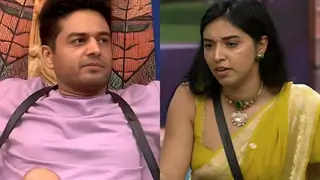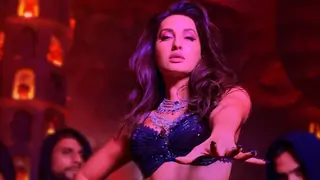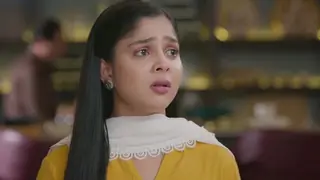http://epaper.hindustantimes.com/default.aspx
Some of interesting portions:
I know for a fact that Ashaji sang her first playback number in 1944, when she was just 10 years old. What I didn't know is that she also acted in that film. Two films, in fact. "The first was a Marathi film called Majha Bal where I both acted and sang. I played an orphan and I get together with the other kids and sing a song," says Ashaji.
"The other one was Badi Maa where Didi (Lata Mangeshkar) sang for me." Was it fun, I inquire, and receive a sardonic look in response. "I absolutely hated acting," she says shortly. "I decided right there that it's a terrible experience. Just for one shot you sit around all day in the studio. Lighting, re-takes, repetition… baap re. I salute actors. You need tremendous patience." But at that age, singing wasn't a whole lot of fun either. Picture a little girl in front of a big mike in a studio and you may have an idea of what went through Ashaji's head the very first time she sang playback. "I was so scared that I thought to myself I'll never sing again," she laughs. "I was very nervous and afraid. I just wanted to get it over and go home." It was performing that was the problem, not the singing itself. "As a child I used to sing a lot," Ashaji remembers. "When I was by myself, would sing at the top of my voice. But if anyone else came into the room, I would fall silent. Visitors would come and I would be asked to sing, but I wouldn't. I'd only sing after they left. So I think my mental make-up is such that I needed a push to get out there and sing. Only then would I would perform, not otherwise." ----- In the 1930s, Ashaji was just a new voice in the music industry. To begin with, she was Lataji's younger sister, and Lataji was already a singing star by the time Ashaji made an entrance. Then there were other vocal legends of the time to contend with: Geeta Dutt, Shamshad Begum, Noor Jehan… What was it like back then? I ask.
"It was chaos," she says. "Everyone would prick up their ears the minute somebody new came into the picture. It was like, who is this new singer? How does she sing? What's her voice like? One day I was taken to a studio in Worli. In those days we just had two track analog recordings, so there I was, along with two other girls, in front of a single mike. I had one solo line to sing. One singer would sing her part and move to make place for the second one. And I could not get my chance. They wouldn't let me. I just stood to one side. I was just a newcomer, what could I say? Then masterji (the music director Hansraj Bahl) came and said, 'Let her sing.' So I stepped up and sang and everyone sat up and said, 'She has great quality to her voice. Great modulation.' And then masterji gave me two solo songs for the film Raat Ki Raani." After that break, Ashaji met the music composer Roshan, who was an assistant at the time. "He took me to another big music director of that time, Khurshid Anwar, and every one began to appreciate what I had to offer," she remembers. "That's how I began getting work. But one thing I have to say is that whatever song I got to sing, big or small, I put my best into it. No thoughts otherwise. It was constant practice towards perfection." There's never been any doubt about that. Ever. But I want to know what Ashaji thought of the other singers of the time. Stars like Lataji, her sister, Geeta Dutt and Noor Jehan.
She stops to think, and takes a deep breath before replying. "Well, I have always liked Didi's songs and have been a constant listener and admirer of her style and the tonality that she applied to the compositions," she says. "And Noor Jehanji was a great singer, I listened to her a lot. But the rest of them never really impressed me as singers.When I first heard Carmen Miranda sing, I was bowled over. A few years later I incorporated one of her phrases into a song I was singing. The music director, C Ramachandra, jumped up in astonishment and shouted, 'What's that you're singing? It's fantastic!'" Obviously then, I remark, that international interjection must have worked well for the song. Ashaji agrees that it did. "But then everybody got on the defensive and criticised my non-traditional approach," she says. "Certain music directors said it was a travesty of Indian music and shouldn't be done." A typical response, I think out loud. Nobody likes a rebel. Anything hat ke would shake them up. Ashaji concurs.
It's only natural then, that my thoughts turn to films of the '50s. Specifically the film Naya Daur, where Ashaji came into her own with the song Maang ke saath tumhara, written by the great composer, OP Nayyar. In fact, she had a very successful run of songs with OP, with hits from a multitude of films including Kashmir Ki Kali, Howrah Bridge, Mere Sanam, Ek Musafir Ek Hasina and others. What was that period like for her?
She looks away toward the balcony. "During that period there were many music directors, and with every one of them I had at least one hit song," says Ashaji. "But I would always get songs for the second heroine, the vamp and so on. Never the heroine. But in Naya Daur I sang for the main lead played by Vyjantimala, and I got this film because of the producer, BR Chopra. Nothing else." Producers were emperors in those days, she says, and they made all the decisions, not the directors or music directors. So Ashaji gives Chopra all the credit for her success in Naya Daur and subsequent films, not OP.
"We were having a sitting at Pancham's (RD Burman) bungalow in Khar. Pancham, Majrooh saab, Nasir Husain, Shammi Kapoor and I were there. Pancham sat at the harmonium and began to present songs for the film. He started singing Deewana mujhsa nahin, which is actually a Nepali folk song – O kancha maatailo," she begins.
"When Pancham sang the first line, Shammi jumped up and began to sing the Nepali song! Everyone fell silent, we were all thinking, that's the end of the music of this film. Then Pancham took his taaveez which he wore around his neck, kissed it once, touched it to his forehead and started the next song, which was Aaja aaja, and Shammi just erupted with joy and everyone went ballistic… with a huge sense of relief though," she laughs. "But that was a completely different style of singing, so on my return home in my car, I continuously practiced singing 'aaja aaja' in that breathy way, and my driver asked me if I was having an asthma attack!" Her laughter is hearty, and I laugh with her, appreciating the memory that is still so alive in her mind.
But her mention of Shammi Kapoor instantly conjures up images of Mohammad Rafi in my mind – it's amazing how the star and the singer are so indelibly welded together – and that in turn reminds me of Kishore Kumar. These singers left a huge void when they passed away, and I ask her if she feels it too.
"Void?" she questions with a smile. "There is a huge chasm, a gigantic vacuum! They were both unique singers. Rafi saab would sing what he was told to sing, true to the composition. An exact rendition was his strength. But Kishoreda was the magician. He would reinterpret the song in his style, giving it a new twist. There is a saying that goes: 'In between the heart and the head is the throat.' If you sing from the heart, you exaggerate, if you sing from the head, you calculate. The trick is to align the two and let your throat do the singing, then the song is perfect. That's what Kishoreda would do. And that's what I had to preempt and return to him in the songs we sang together." ----- I mentally run through all the Asha-Kishore duets I can remember and am exhausted.Asha Bhosle began singing professionally aged 10, to help support her family. But she came into her own in 1957 with the film Naya Daur. There was no stopping the singer after that. Her alliances with music directors OP Nayyar, SD Burman, and later, RD Burman, took her higher and higher, till she was able to rival her sister, Lata Mangeshkar, behind the mike.
RD – Rahul Dev – Burman, known for the tremendous changes he brought to Hindi film music, played more than a professional part in Asha's life. The young music director wooed and wed the divorcee. (Asha's first marriage to a much older man, Ganpatrao Bhosle, had failed.) And the two of them made beautiful music together. After RD's death, Asha went into a decline, but reemerged in 1994 as a powerful singer with AR Rahman's songs for the film Rangeela: Rangeela re and Tanha tanha.
S o I ask her how she first met RD. Ashaji closes her eyes, going back in time. "The film was Armaan, Fali Mistri's film. There was a recording at Famous Studios. There he was, tight shirt, thick glasses, oily hair slicked back, short little man, ekdum Bangali…" This doesn't sound very romantic, and neither does what follows. "His father, the great SD Burman, was recording and he introduced us. RD asked for my autograph! He told me he had dropped out of college to pursue music. I reprimanded him for that, but he said, 'why study for something I'll never use? I want to make music. I want to be a music director.'" I think to myself, he came to Bombay to be a music director and became a legend. A legend we lost on 4th January 1994. When RD died, the Indian music industry lost its soul. Truly. I dare anyone to disagree. But I can't imagine what it's like for Ashaji to endure that loss.
"More than his songs, I really miss him," she says, her voice lower than usual. "Miss talking to him, the daily repartee, the music sessions… His last days were not very good. His name was removed from some of the work he was doing. 😡 He could not deal with the trauma of disassociation. Imagine yourself working on something for a while, and suddenly your name is struck from the credits. To an artist that is unbearable. That's what gave him his first heart attack. We took him to London for treatment but the decline had begun. It was only a matter of time…" There's silence as Ashaji contemplates RD. And I sit here, looking at a lady of grace and grandeur. A lady of substance and survival. A lady of respectable talent and resilient mind. Because she is the phoenix that rises from the ashes of time to make the world sing to her tune. Ho ja rangeela re… the singular song that marked the resurgence of Asha Bhosle, this time to infallible heights.
"There was a time when I would sit on my own and think, after RD, now what?" she says, her voice stronger now. "And I did not see any light. But then a good friend of mine, Gopi Kishan, told me, 'Your voice is your paramour, it's what RD loved you for. Don't let that waver.' So I got up and got singing again." And she bursts into song, right here and now. "Tanha, tanha, yahan pe jeena…" I join in. "…Yeh koi baat hai…" And we laugh, like little children.
********
Asha ji ko mera Shat-Shat pranaam.






















